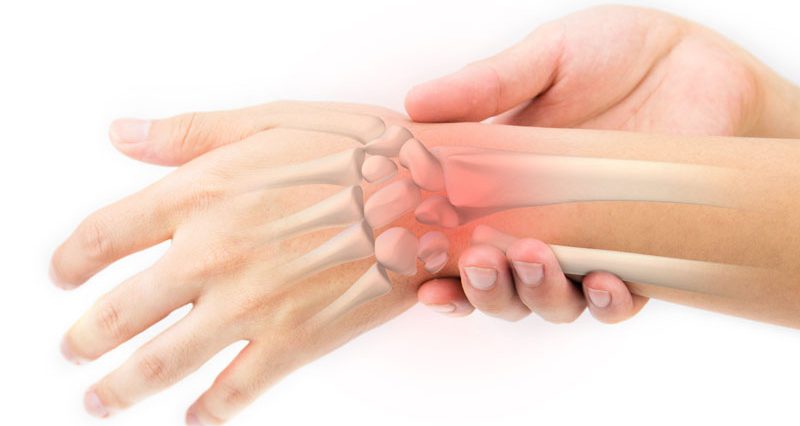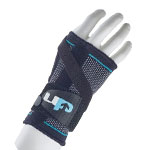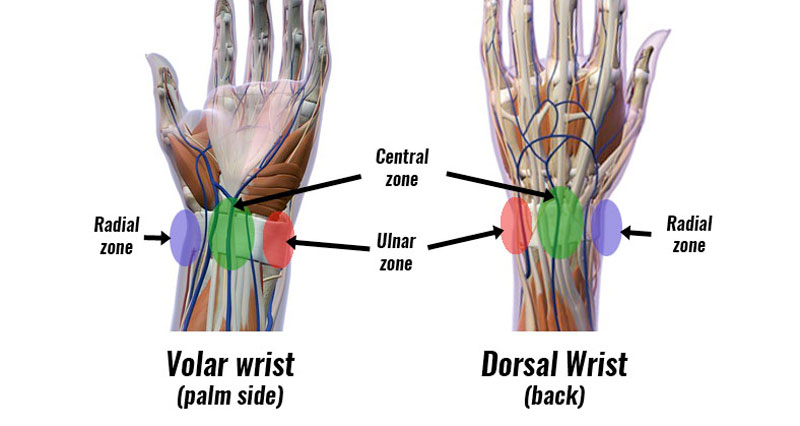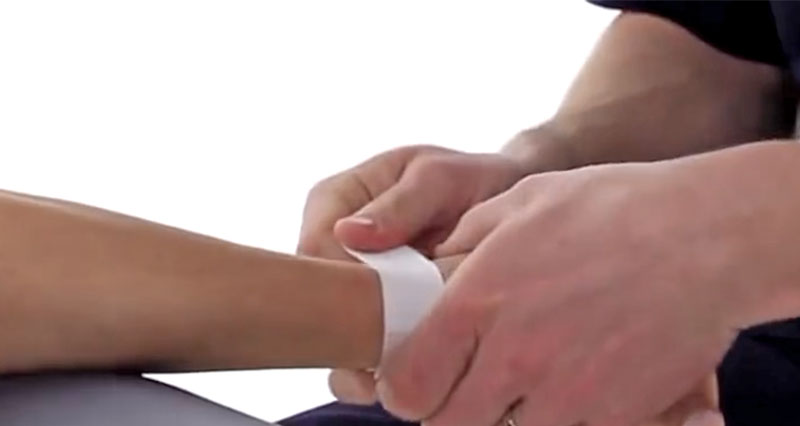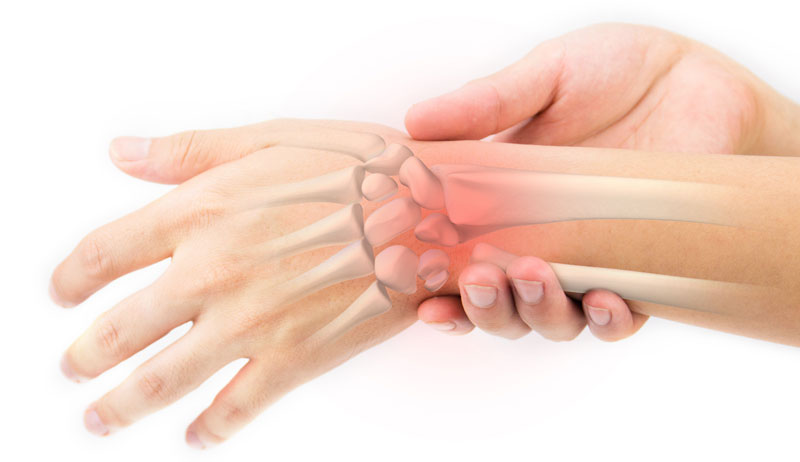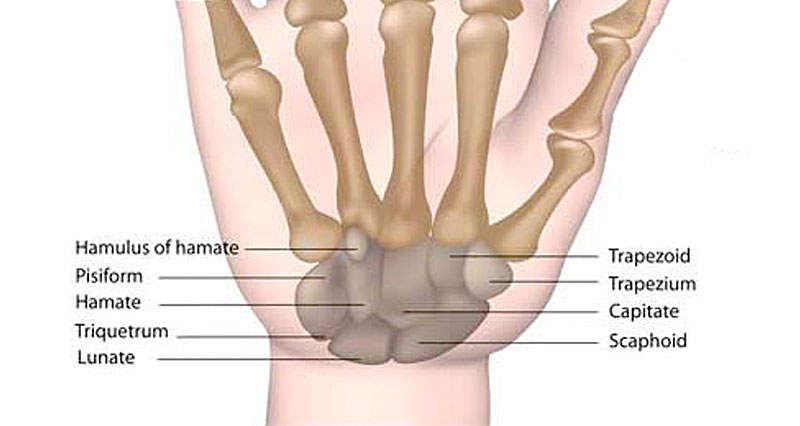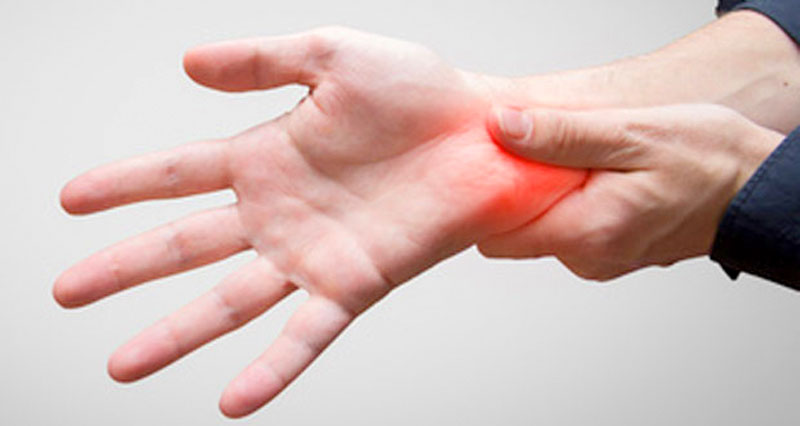Gradual onset injuries or chronic injuries occur over a period of time and often cannot be traced back to a single incident or cause. Here we explain the injuries which cause chronic wrist pain.
Wrist tendonitis
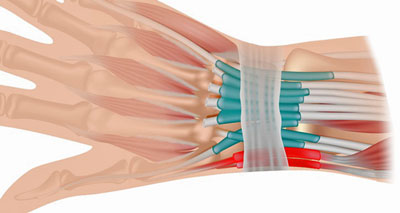
Wrist tendonitis (tendinopathy) is inflammation, or more likely degeneration, of any of the flexor or extensor tendons which cross the wrist joint. Repetitive strain and overuse can cause the following symptoms:
- Pain in the wrist which has developed gradually over time, rather than from a sudden traumatic event.
- Stiffness in the joint when moving it.
- Swelling, particularly local swelling over the tendon.
- Read more on Wrist tendonitis
Carpal tunnel syndrome
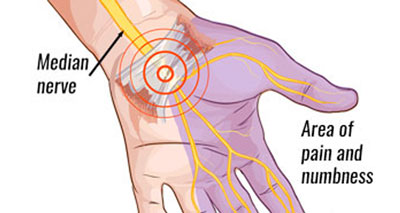
Symptoms of carpal tunnel syndrome consist of:
- A dull ache in the wrist and forearm.
- Pain may radiate into the thumb and four fingers of your hand, but not the little finger.
- You may feel sensations of tingling or burning pain.
- Symptoms
- Weakness in the hand and fingers, with difficulty gripping things.
- Read more on Carpal tunnel syndrome
Distal radial epiphyseal injury
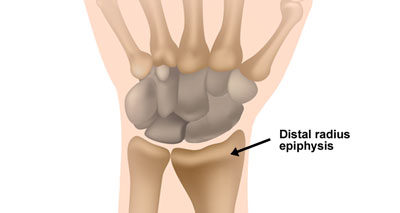
A distal radial epiphysis injury is an injury to the growth plate at the wrist end of the radius bone in the forearm. It mostly affects young athletes with symptoms of:
- Wrist pain, especially when your wrist is bent backwards with the palm facing down (movement known as wrist dorsiflexion).
- You are likely to have limited ability to dorsiflex your wrist.
- As a result, this may prevent gymnasts from performing certain movements.
- You may have tenderness and swelling around the end of the radius bone.
- Read more on Distal radial epiphyseal injury
RSI (repetitive strain injury)
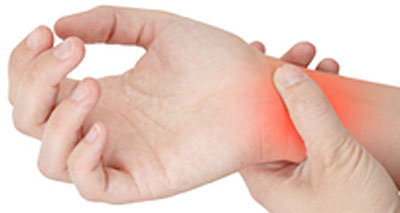
RSI is a general term rather than a specific diagnosis used to describe gradual onset pain usually in the forearm, wrist, and hand. It is a term that covers several different causes of wrist pain, but all are exacerbated by certain repetitive movements, whether they’re from sport or from work.
- Read more on RSI
Ganglion cyst
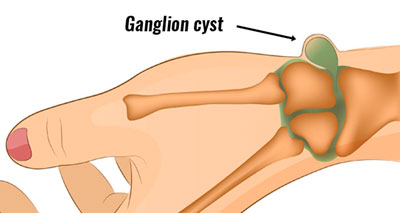
Ganglian cyst (or wrist ganglion) is a small lump which appears in the wrist, often attached to a ligament. The size of the cyst and the severity of the wrist pain varies from person to person. Some ganglions are not painful so can be left, but others can hinder movement and cause pain, so may require treatment.
- Read more on Ganglion cyst
Wrist bursitis
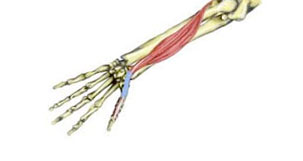
A bursa is a small sack of fluid that lubricates where tendons move in joints, of which there are two in the wrist. If a bursa is subjected to repeated trauma or friction then it can become inflamed and swollen, causing wrist pain.
Although the pain can be severe, wrist bursitis can often go away with rest, ice and compression, without the need for any major treatment.
- Read more on Wrist bursitis
De Quervain’s Tenosynovitis
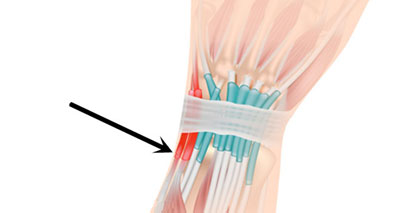
De Quervain’s Tenosynovitis is inflammation of the synovium or sheath that surrounds two tendons in the wrist which attach to the base of the thumb.
It is a form of repetitive strain injury which can be exacerbated by sporting and work activities. The inflammation can cause pain and restrict movement in the wrist, but in most cases, it can be treated without surgery.
- Read more on De Quervain’s Tenosynovitis
Kienbock’s Disease
Kienbock’s disease is necrosis of the lunate bone in the wrist due to poor or restricted blood supply. It is more common in adult males although has been known in young gymnasts.
- Read more on Kienbocks disease
